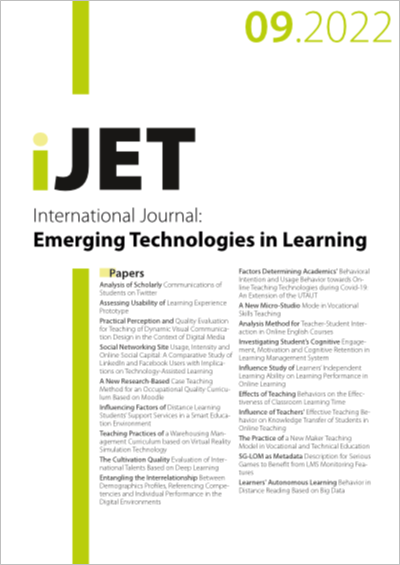The Practice of a New Maker Teaching Model in Vocational and Technical Education
DOI:
https://doi.org/10.3991/ijet.v17i09.30935Keywords:
Cyberspace; vocational and technical education; set pair analysis; maker teachingAbstract
Affected by the traditional teaching model, vocational education and teaching tend to emphasize theory but ignore practice, and students have a poor innovation ability, which can’t satisfy the talent needs of the development of social market. In consideration of this, this paper introduces a maker teaching model supported by cyberspace, which divides the teaching process into six stages: knowledge learning, situational thinking, operational practice, research program, creative learning, sharing and communication. Combined with the characteristics of vocational education course, the maker teaching model is applied to this course, and the design is made from three aspects: maker spirit, maker ability and maker practice. At the same time, set pair analysis is adopted to set up a teacher-student two-way teaching effect evaluation model, with a view to improve the teaching effect of vocational education courses and enhance students’ ability. The teaching practice results of this study indicate that students’ learning initiative is effectively promoted under this teaching model, and the learning effect is relatively good. This education mode overmatches the traditional teaching method.
Downloads
Published
How to Cite
Issue
Section
License
Copyright (c) 2022 Zhiqing Hu, Xueyu Gong

This work is licensed under a Creative Commons Attribution 4.0 International License.


